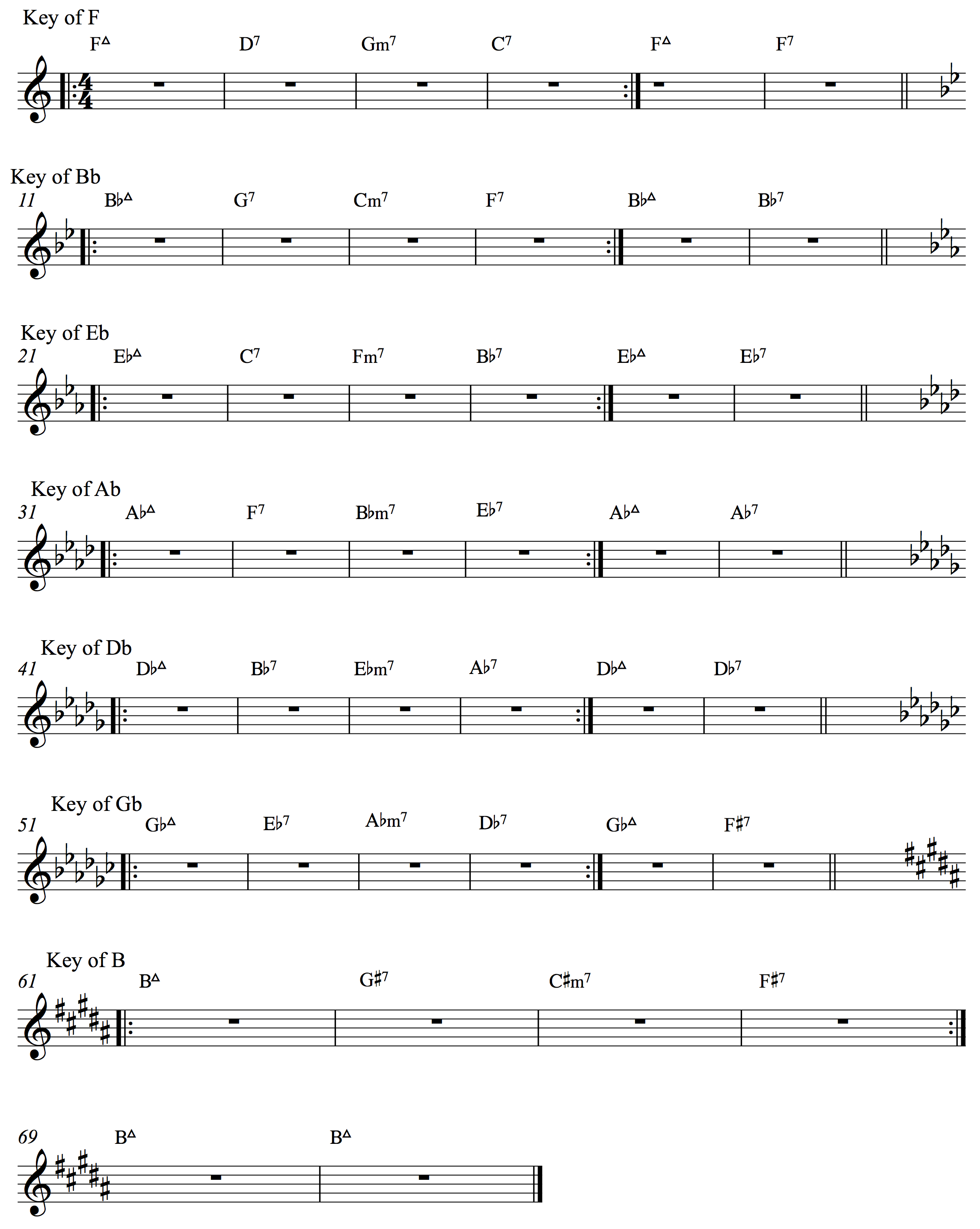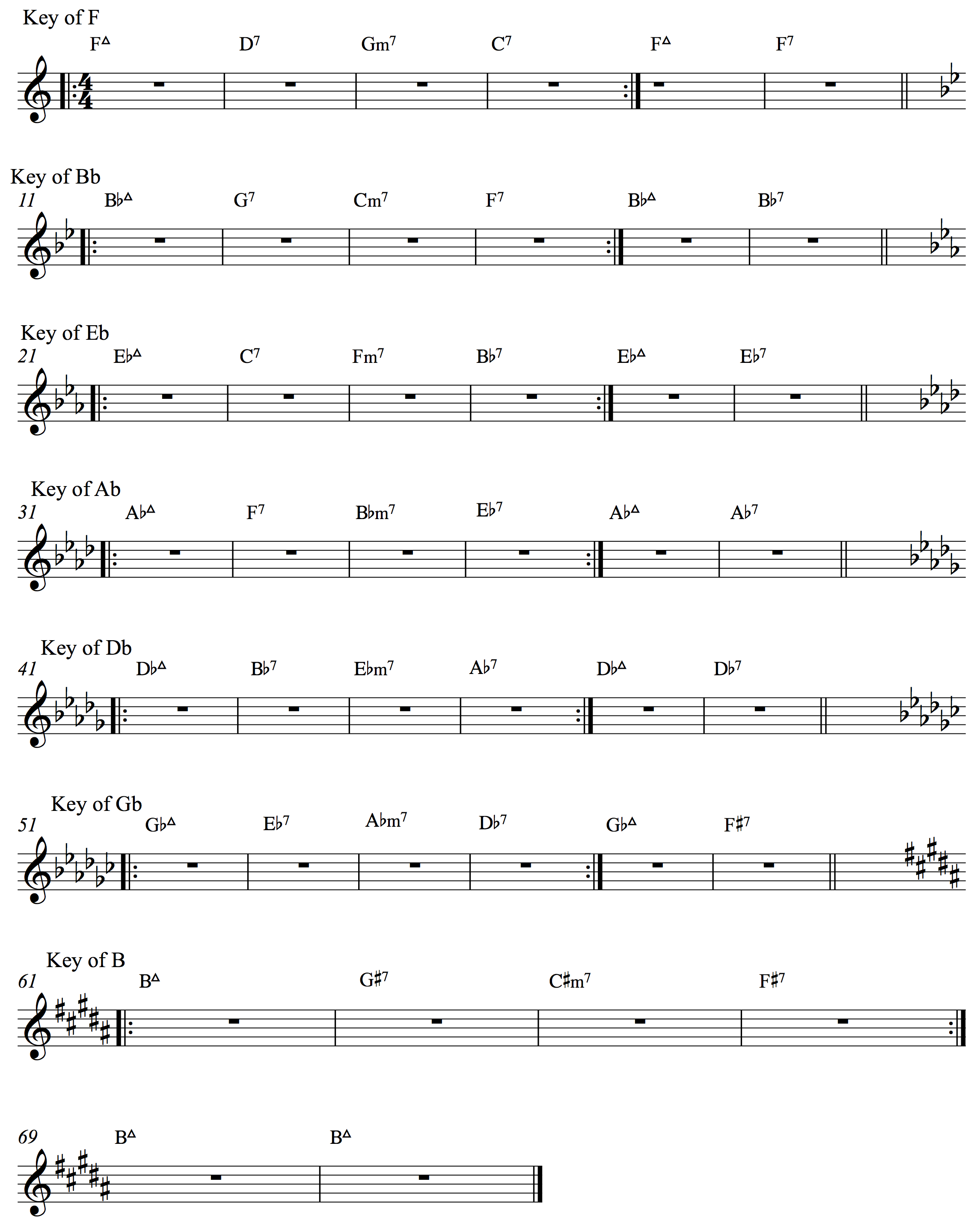Creative jazz practice: chapter 12, book 3
Here are some great tips for creative jazz practice.
This is an extract from book 3 of Learn Jazz Piano.
Click here for your link to all 4 eBooks
Chapter 12: Creative jazz practice
Keyboard The ideal is to practice on an acoustic piano, as the sound and action will always be superior to an electronic keyboard.
However, if you are playing on an electronic keyboard, there are three priorities:
- The keyboard should be full-length: i.e. 88 keys.
- It should possess one decent piano sound. Don’t be tempted by a host of sounds and functions that you’ll never use.
- The action should be weighted. You should feel a ‘give’ when pressing a key.
Optional extras
- Split keyboard: piano for right hand and bass for left hand.
- Recording facility: this will enable you to record, say, the song’s bass line, so that you can practice over it.
Suggested order for creative jazz practice.
I suggest that you begin with drills and exercises. Then move on to tunes.
Drills and exercises
II – V – I Develop the ability to solo and comp through the
II – V – I sequence in all major and minor keys. This is crucial to your progress as a jazz musician.
Resist the temptation to only play in the easy keys, as you will soon be encountering certain standards in ‘difficult’ keys. For example, Body and Soul is usually in Db and ‘Round Midnight is in Eb minor!
II – V A II – V sequence doesn’t always resolve to its tonic. Instead, it might move to another II – V. Use fig 85, below, to practice switching through a series of random II – V’s.
Fig 85

I – VI – II – V This common turnaround often appears at the end of a tune to lead you back to the start. The VI chord is usually a dominant 7.
Fig 86 illustrates the sequence in seven keys.
Practicing tunes
1 Read the music How’s your sight-reading? Some musicians get by without being able to read a note of music, but I would not have stayed in regular work over the years without this skill. Spend a little time each day reading a new tune. Don’t approximate; both melody and rhythm need to be accurate.
2 Listen to recordings In my work as a vocal coach I’m often dismayed by singers replicating Sinatra’s version of I’ve Got You Under My Skin, or Eva Cassidy’s interpretation of Over The Rainbow. Some actually assume that the song was written this way!
When researching a song, I suggest you start with a relatively ‘straight’ version rather than an interpretation.
Pay attention to the lyrics. This will give you a sense of the emotion behind the song. Once you’re familiar with the song, sample some jazz instrumental versions.
Examples
Song: How Deep Is The Ocean
Straight: Julie London
Jazz: Ben Webster
————————
Song: Secret Love
Straight: Doris Day
Jazz: Brad Mehldau
You can find the rest of this chapter in book 3 of Learn Jazz Piano.
